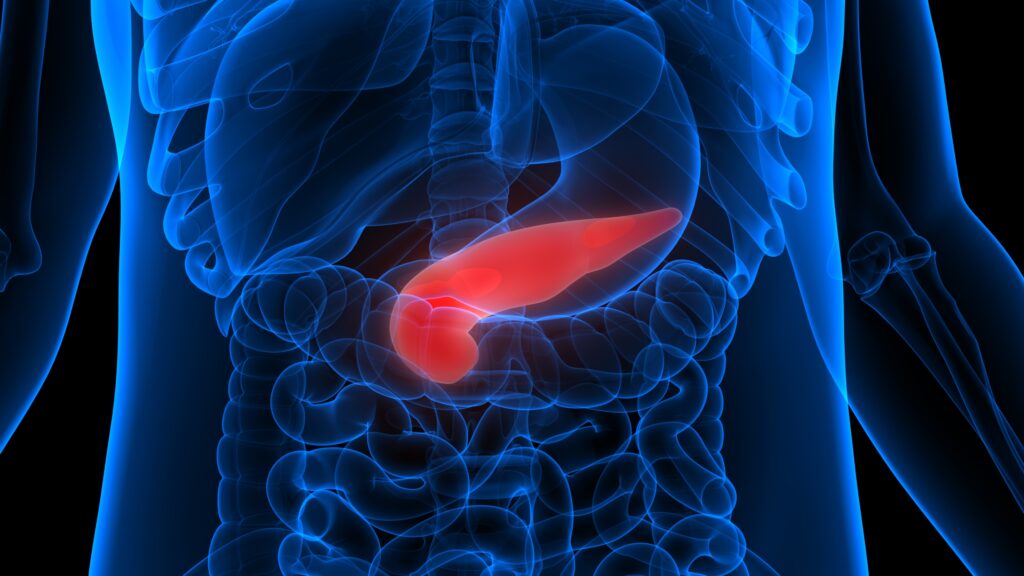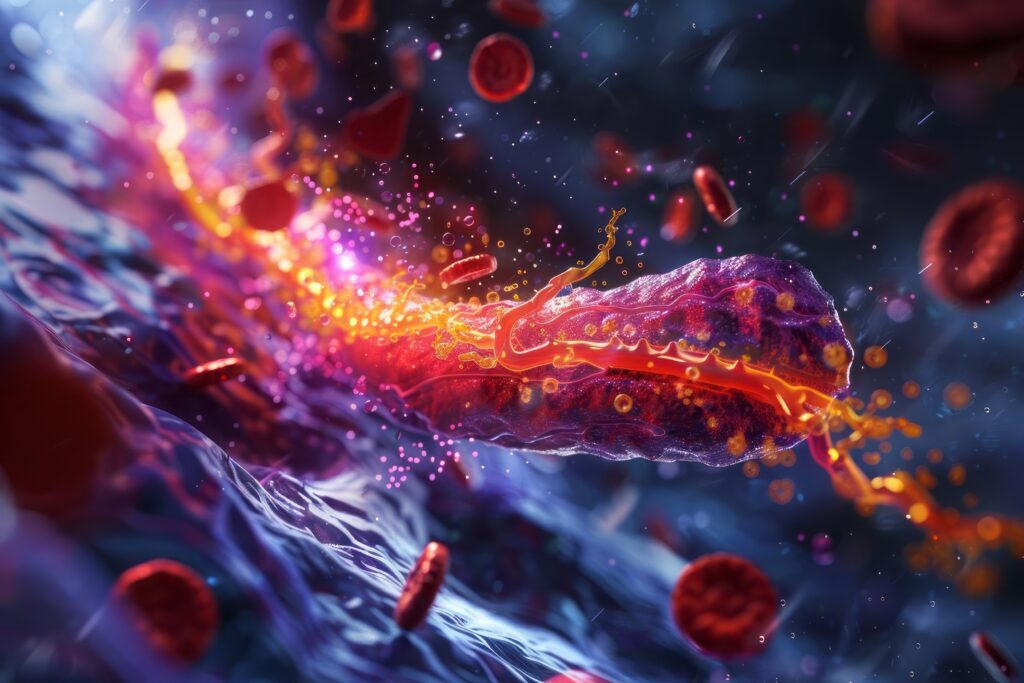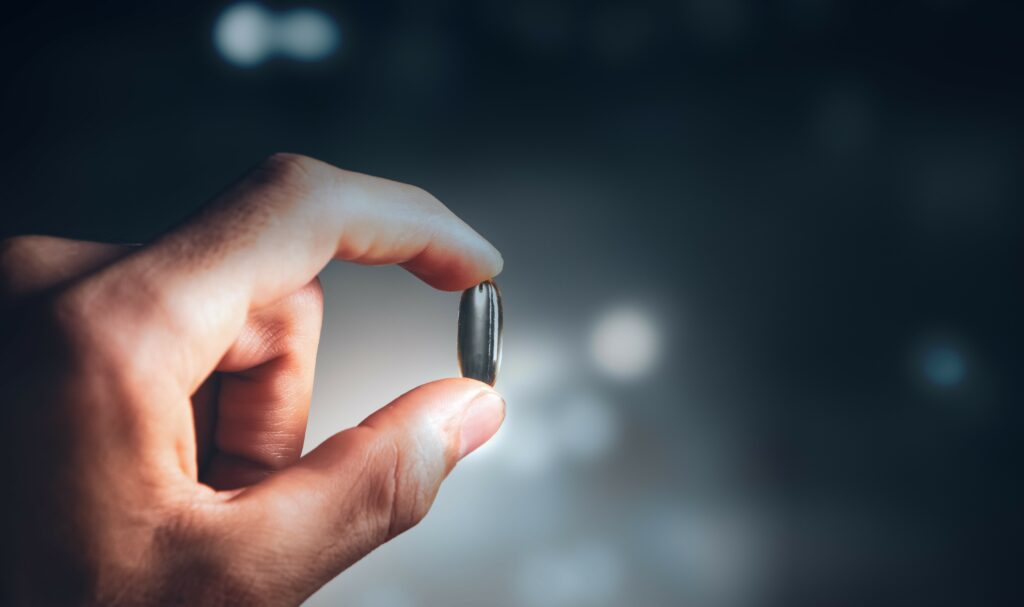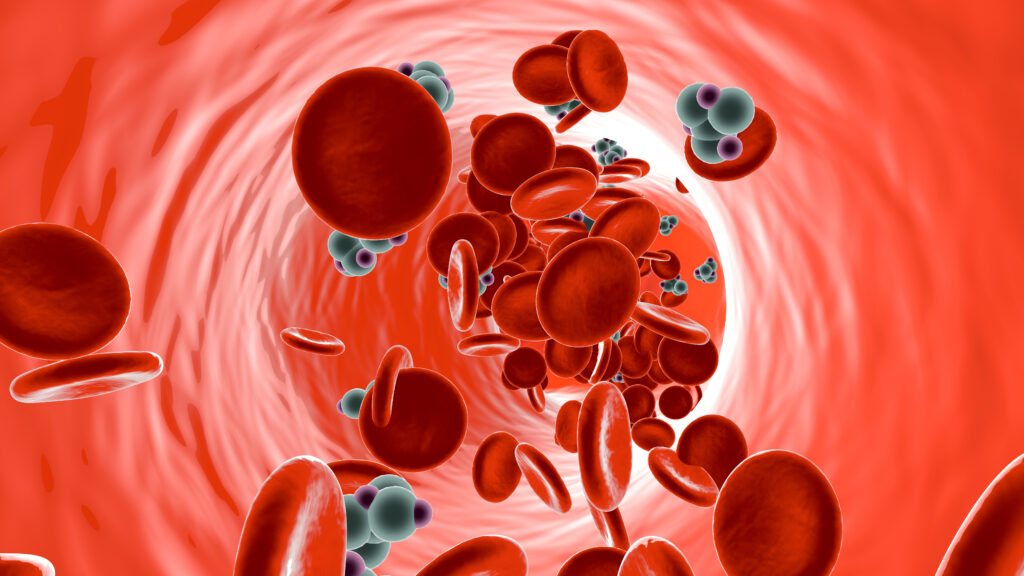Islet cell transplantation has recently emerged as one the most promising therapeutic approaches for improving glycometabolic control in diabetic patients and, in many cases, to obtaining insulin independence. However, investigators are still debating whether islet transplantation should be considered as an option only in specific single cases. In this brief article, I will review the state of the art of islet transplantation, as well as the many problems surrounding the field and the obstacles that islets face after transplantation.
Islet cell transplantation has recently emerged as one the most promising therapeutic approaches for improving glycometabolic control in diabetic patients and, in many cases, to obtaining insulin independence. However, investigators are still debating whether islet transplantation should be considered as an option only in specific single cases. In this brief article, I will review the state of the art of islet transplantation, as well as the many problems surrounding the field and the obstacles that islets face after transplantation. The rate of insulin independence one year after islet cell transplantation has significantly improved in recent years (60% at one year post-transplantation compared with 15% in previous years). Recent data indicate that restoration of insulin secretion after islet cell transplantation is associated with an improvement in quality of life, with a reduction in hypoglycemic episodes and (potentially) long-term diabetic complications. Once clinical islet transplantation has been successfully established, this treatment could even be offered to diabetic patients long before the onset of diabetic complications.
The master treatment for patients affected by type 1 diabetes is insulin therapy, which was a life-saving breakthrough when it was introduced. Unfortunately, insulin treatment cannot fully prevent chronic complications related to diabetes, and intensive insulin treatment to improve metabolic control increases the risk for fatal hypoglycemic episodes.1–4 The hypothesis that the replacement of the endocrine pancreas by transplanting fragments of insulin-producing tissue could be helpful is not new.5 Pancreatic fragments can produce their own insulin with closely controlled and finely timed insulin release. Islet transplantation is a relatively new medical procedure to substitute pancreatic function; unfortunately, the evident contradictions prevented islet therapy from becoming a real option for type 1 diabetic patients. The absence of standardized protocols and the differences in inclusion criteria and immunosuppressive regimens among studies prevents islet transplantation from becoming the gold standard for treatment.
The first attempt to transplant pieces of the pancreas was made by Watson in 1893, who injected sheep pancreatic fragments into a 15-year-old boy. This first islet xenograft, which preceded the historic discovery of insulin by Banting and Best in 1922, was a clear failure but, in retrospect, was audacious. Paul E Lacy can without doubt be considered the inventor of islet transplantation and the first method for isolating islets from rodent pancreata.6 A milestone was reached in 1972, when Ballinger and Lacy reported that islet isografts from normal rats could reverse streptozotocin-induced diabetes in the animals.7 During the 1980s, different reports suggested, for the first time, the feasibility of islet transplantation in humans by transplanting autologous islets in patients with painful and chronic pancreatitis who had undergone total pancreatectomy for pain relief.8 This approach confirmed that islet isolation was feasible and that the transplantation of isolated islets could confer and sustain normoglycemia in the long term. In 1986, great progress was made when researchers stopped using the tissue macerator and instead used the Ricordi chamber, an automated method of islet isolation. Ricordi showed that it was possible to digest the pancreas with the help of collagenase, process the digested pancreas, and, finally, isolate the islets using a gradient procedure.9
In the 1990s, the Diabetes Research Institute in Miami performed the first series of six successful islet allograft transplantations in humans, with subsequent unequivocal evidence of the long-term reversal of diabetes.10,11 A few of these patients showed many years of insulin independence, as confirmed in reports from the Milan and Miami groups.12,13 Thanks to the efforts of Hering and Bretzel, who in the meantime introduced the use of endotoxin-free re-agents,14,15 the Islet Transplantation Registry (ITR) became an important source of information for researchers. However, despite these efforts, the overall success rate for islet transplantation (with a criterion of insulin independence) was less than 10% (reported by the ITR newsletter, June 2001).
In 2000, Shapiro et al. reported complete insulin independence in seven patients with type 1 diabetes who received islet allografts.16 This high rate may have been due to the substantial and multiple differences between their techniques and previous techniques (i.e. the introduction of a sirolimus- or tacrolimus-based immunosuppressive regimen and the avoidance of steroids). As induction, patients received an anti-interleukin (IL)-2r drug (daclizumab). Another major step forward was the introduction of multiple islet injections from different donors to obtain a sufficient islet mass to overwhelm the high apoptotic rate of islets during infusion,17 the deleterious effects of hyperglycemia on islets, and the overwork faced by islets after transplantation.18 In 2003, the first uncontrolled preliminary paper showing a positive and beneficial effect of transplanted islets on kidney function in patients who had received a kidney graft was published by Fiorina et al.19
In September 2006, the report from the International Trial of the Edmonton Protocol was published in the New England Journal of Medicine,20 confirming that insulin independence can be achieved in more than 50% of transplanted patients. More than 80% of the patients in this study had a restoration of endogenous C-peptide production in the long term, with a positive impact on levels of glycated hemoglobin and few adverse events. More trials are under way, confirming the excitement around the procedure.
Islet Isolation and Transplantation
Islets are isolated from the pancreata of multiple donors. The pancreas is carefully dissected from the duodenum; the main and accessory ducts are identified, clamped, and divided. Collagenase is injected into the pancreatic duct to separate islets from exocrine tissues and selectively digest the fibrotic framework of the pancreas. A cannula is placed in the pancreatic duct to allow for injecting an enzyme blend to distend the organ. The purity and content of enzymes differ from batch to batch, contributing (along with many other factors) to differences in islet yield at each isolation.
For decades, the identification of suitable enzyme blends that could allow for large-scale separation of viable human islets has been a major challenge.5 The introduction of Liberase-HI (Roche Diagnostics, Indianapolis, IN) has brought about an improvement in islet isolation outcomes,21 and the enzyme blend was rapidly adopted by most islet isolation processing facilities worldwide. However, recent audits revealed that bovine brain substrates were used in the production of Liberase-HI, introducing a potential risk for the transmission of bovine spongiform encephalophaty (BSE). Even though the prevalence of BSE in US cattle is extremely low, with a probability of four to seven cows being infected in every 42 million adult cattle (www.aphis.usda.gov/newsroom/hot_issues/bse/index.shtml), as a precaution the US Food and Drug Administration (FDA) requested that investigators holding an islet transplant investigational new drug (IND) update informed consents to reflect this risk. Even though the FDA did not request a hold on any islet clinical trial or exclude possible continuation of clinical trials using Liberase-HI, some islet transplant centers adopted a voluntary suspension pending resolution of the issue. In addition, some funding agencies (including the National Institutes of Health [NIH]) have requested the replacement of Liberase-HI with other collagenase products not obtained using bovine-brain-derived raw materials. Alternative sources of enzyme blends have already been identified and tested, while Roche and other enzyme blend manufacturers are already in the process of replacing the Liberase-HI with products that are free from any questionable raw material.
The pancreas is placed in Ricordi’s chamber, and a continuous digestion process disassembles the organ. A heating circuit activates the enzymes, allowing the islets to be released and collected at the bottom of the chamber. Islets are protected and collected by cooling and washing them. With the use of dithizone and a transparent chamber, islets can be stained and followed to monitor digestion. At the end of the process, pancreatic cell clusters are collected in separate containers, while the fibrous network of duct and vessels is retained in the chamber.
Given that the density of exocrine tissue is higher than that of islets, various centrifugation techniques have been used to increase the yield of islet isolation. The use of a discontinuous gradient centrifugation technique with automated centrifuges is now common in many centers. The small islet fraction is separated from predominantly exocrine tissue and non-islet tissue on a density gradient using specialized cell processors (COBE 2991 Cell Processor; COBE Lakewood, CO).22–25 After this step, the pure islet fraction is normally located in the top layer, while less pure islets and ‘mantled’ islets (surrounded by exocrine tissue) are located within more dense interfaces. The volume of tissue infused needs to remain within acceptable limits (5–7ml). Islets would then be cultured in a humidified atmosphere (5% CO2) in a medium supplemented with nutrients. Satisfactory preparation should meet the following criteria: sterility (assessment for aerobic, anaerobic, fungal, mycoplasmal organisms), number of equivalent islets (EI) >6,000/kg in each infusion, and purity >20% (morphometric analysis of islets). A membrane dye exclusion test (fluorescein diacetate/propidium bromide) and a test of insulin secretory function would determine in vitro islet viability. Two major tests have been proposed to evaluate the insulin secretory ability of isolated islets: the in vitro glucose challenge and a determination of the ability of isolated islets to reverse hyperglycemia when transplanted in vivo under the kidney capsule in streptozotocin-diabetic nude mice.
Currently, islets are infused via the portal vein, where they become trapped and nest within the terminal portal venules and sinusoids in the liver. The portal vein is usually accessed by the percutaneous transhepatic approach, avoiding the need for surgery and general anesthesia with ultrasound or fluoroscopic guidance. On rare occasions, when access to the portal vein is technically difficult or risky using the percutaneous approach (e.g. where there is a large right-sided liver hemangioma), islets may be infused directly via minilaparotomy into tributaries of the portal vein. Cannulation of the middle colic or inferior mesenteric veins allows for the placement of a temporary dual-lumen catheter (e.g. dual-lumen 9-French Broviac catheter), allowing for simultaneous islet infusion with constant monitoring of the portal venous pressure.
Portal vein pressure must be closely checked before and after the procedure. The median time between the first and second transplants ranges from one to three months; the time between the second and third transplants (if required) is more variable. After the procedure, patients remain hospitalized for a few days according to the schedule of the transplant physician. Ultrasound of the liver is performed every other day, along with liver enzyme tests. For several days, patients are on stringent glucose metabolic control via an intravenous insulin pump to avoid the toxic effect of hyperglycemia on the transplanted islets. In the first few days after the first infusion of islets, the daily insulin requirement drops by a mean of 30–50%, and most patients become completely insulin-independent after the second injection. Blood samples are analyzed three times per week for the first week, and then at weekly office visits for the first month. The regular post-transplant schedule includes glucose monitoring every two hours, together with the assessment of fasting C-peptide and insulin levels. Doppler ultrasound is necessary to monitor the viability of the portal vein, and liver enzymes need to be evaluated for possible hepatic necrosis. Blood cell counts and immunosuppressant levels must be assessed regularly. To prevent portal vein thrombosis, enoxaparin 30mg twice-daily (BID) is started four hours after islet infusion and continued for seven days. In the long term, hematology, renal function, and liver function assessments are performed three times per week immediately post-hospitalization, then once a week for the first month, and finally monthly. Glucose levels must be monitored at least daily in the long term. Glycated hemoglobin, lipid profile, magnesium, calcium, and phosphorus are assessed once a month; viral studies and serology for cytomegalovirus (CMV) and Epstein-Barr viral (EBV) load are also performed every month. Patients are seen in the clinic weekly until three months post-transplantation, twice a month until six months posttransplantation, and then monthly.
The most common post-transplant symptoms are transient abdominal pain, nausea, and occasional vomiting.20,26 Venturini et al. reported complications in only three (one hemoperitoneum, one hemothorax, and one partial portal thrombosis) of 58 patients who underwent islet cell transplantation (intrahepatic).26 The rate of acute complications is 2–3% for hemorrhage and 3% for partial portal vein thrombosis. Hepatic focal steatosis without functional impairment has been reported in 20–30% of cases.27,28
A new and different spectrum of adverse events was seen among the patients in the Immune Tolerance Network (ITN) trial of the Edmonton protocol recently published in the New England Journal of Medicine.20 There were no deaths or post-transplant cancer/lymphoproliferative disorders among the study subjects. No major viral infections were evident (i.e. CMV or EBV), but 38 serious events occurred, at least 23 of which were related to the study therapy. Among them were five cases of neutropenia, two cases of pneumonia, two cases of mouth ulcers and gastrointestinal conditions, and one case of pericardial effusion and appendiceal abscess. The rate of intraperitoneal bleeding was 10% among the patients with serious adverse events due to study therapy; four of these patients required a blood transfusion and one required a laparotomy. Main portal branch thrombosis was almost absent, and the rate of peripheral branch or partial thrombosis was low (~6%). One unexpected potential adverse event was the decline in creatinine clearance (0.45ml/minute of decline per month), making the evaluation of renal function an important issue. Despite the fact that few complications occurred, these should be reported to the potential candidates in view of the fact that insulin treatment is safe.
Worldwide, almost 400 islet transplantation procedures have been performed, but historical data from the islet transplant registry headed by the Giessen group showed rates of insulin independence of less than 20% at one year.14,15 Clinical outcomes have changed in recent years with the introduction of safer and less toxic immunosuppressive protocols. As of 2000, this rate was increased by the introduction of a steroid-free protocol by the Edmonton group, whose success was confirmed by a recent report in the New England Journal of Medicine (see Table 1).20 Shapiro and colleagues’ report of 100% insulin independence in seven patients with type 1 diabetes and life-threatening hypoglycemic unawareness expedited the growth of the field of islet transplantation.16 The use of sequential organ donors to ensure sufficient islet tissue (12,000IE/kg bodyweight was required), the minimization of cold and warm ischemia time, and the avoidance of immunosuppressive drugs toxic to islets contributed to this success.
Unfortunately, despite improvements, islet transplantation retains many unresolved problems, and islet graft survival rates remain far below those of other grafts. The insulin-free survival rate falls dramatically to 15% at five years, narrowing the window of clinical benefit.29 Clearly, much progress is needed to make islet cell transplantation as successful as other solid-organ transplantations. A recent report from Hering’s group at the University of Minnesota showed that all eight women who received single-donor islet cell transplants became insulin-independent.30 Careful selection of low-weight recipients, high body mass index (BMI) donors, islet quality, and immunosuppressive treatment with antithymocyte globulin and etanercept (a tumor necrosis factor [TNF]-α antagonist) may have contributed to these positive results. Despite the dramatic loss of insulin independence over time and unclear effects on glycated hemoglobin, some patients showed a persistent C-peptide secretion in the long term and a clear reduction in the daily requirement for exogenous insulin. Furthermore, preliminary and uncontrolled studies suggest that islet transplantation can be helpful for long-term diabetic complications. The reasons for the decline or complete loss of islet function after transplantation are unclear and will be discussed below, but may involve direct immunosuppressive toxicity, allo- or recurrent autoimmune rejection, or potential islet cell apoptosis.17,31
Indications for Islet Cell Transplantation
Frequent and severe hypoglycemic events are the most common indication for islet transplantation. Other possible indications include clinical and emotional problems associated with the use of exogenous insulin therapy that are severe enough to be incapacitating, and the consistent failure of insulin-based management to prevent acute complications. On the other hand, IAK is restricted to patients with end-stage renal disease affected by type 1 diabetes who underwent kidney transplantation alone or who rejected the pancreas after simultaneous kidney–pancreas transplantation; for ITA the selection of the patients is an important issue. Currently, the major problem with accurate indications is the absence of a controlled double-blind study showing the positive impact of islet transplantation on diabetic mortality and morbidity. Again, it is unclear whether the harmful toxic effects of immunosuppression can be recommended in type 1 diabetic patients who can be treated with insulin-intensive treatment, an insulin pump, or even a pancreas-alone transplant. In patients with a kidney graft, it is likely that islet transplantation will be more helpful, or at least not toxic for the patient and the graft, particularly in the absence of any change in the immunosuppressive regimen.
Perspectives and Problems
Many major hurdles must be overcome before successful islet cell transplantation is achieved. Currently, most centers require islet isolation from more than one pancreata for each recipient. A shortage of organs, and thus a limited supply of islets, is a major obstacle. To overcome this problem, investigators are seeking to improve islet isolation methods, learning to grow islets from exocrine ducts with the support of gene therapy, and using xeno-islets. A primary reason for the recent success of clinical islet isolation has been the decrease in the use of immunosuppressants, which are associated with islet toxicity. Promising results have come from the use of new immunosuppressive agents, such as the new mammalian target of rapamycin (mTOR) inhibitor everolimus, the IL-2 inhibitor basiliximab, and co-stimulatory blockades with, for example, humanized anti-CD154, LEA29Y, and hCTLA4Ig.32 Encapsulating islets to protect them from attack by lymphocytes is another exciting new approach.33 Tolerance induction that renders the recipient independent of immunosuppressants is the ultimate goal. Given that a major cause of ‘islet exhaustion’ may be the recurrence of autoimmune diabetes, we should consider the possibility that specific immunosuppressive agents may also have antiautoimmune effects. We are still ignorant of the different roles of alloimmunity versus autoimmunity in human islet transplantation, and over the coming years we will learn whether the early failure of islets was more a delayed rejection or an autoimmune attack on transplanted islets. In vitro tests are being developed to dissect the roles of allo- and autoimmunity, often using the enzyme-linked immunosorbent spot (ELISPOT) with human leukocyte antigen (HLA)/islets peptide.34,35
The many exciting possible strategies for improving the outcome of islet cell transplantation include using rituximab (to prevent the recurrence of autoimmunity), insulin sensitizers (to reduce the negative effect of insulin resistance), and glucagon-like peptide (GLP)-1 analogs (such as exendin or liraglutide), which have islet antiapoptotic and regenerative effects.36 One of the major limiting factors in islet cell transplantation is the lack of knowledge regarding the fate of the islets following transplantation in the liver. For instance, we do not know how islets are revascularized in humans, nor do we know the extent to which ischemic changes or simply non-functioning grafts are involved in islet cell transplantation that fails. There is also a dearth of information about how the islets are rejected. In almost all cases (except necropsy), it is difficult to obtain islets through biopsy to examine the histology of rejection or non-immune-mediated islet damage, and there is as yet no specific marker to identify islet allograft rejection. An important question that remains is whether islets should be transplanted to an area where they are more easily accessible.
Successful islet cell transplantation could potentially provide insulin independence and halt long-term diabetic complications, but no controlled study has so far shown that, despite immunosuppression, type 1 islet transplantation can be superior to insulin pump or the transplantation of pancreas alone.
Conclusions
Islet cell transplantation holds great promise for treating patients with type 1 diabetes.32 Islet transplantation is a relatively non-invasive procedure and an attractive alternative to pancreas transplantation for restoring endogenous insulin secretion in patients with type 1 diabetes.5,32,37,38 Unfortunately, although some patients show very long-term survival, in terms of insulin independence or endogenous C-peptide secretion5,37,38 the success rate drops dramatically among some patients. Recent uncontrolled and preliminary studies have shown that this partial restoration of insulin and C-peptide secretion can be helpful and protective in long-term diabetic complications, but these results must be confirmed in larger studies.38,39 ■














